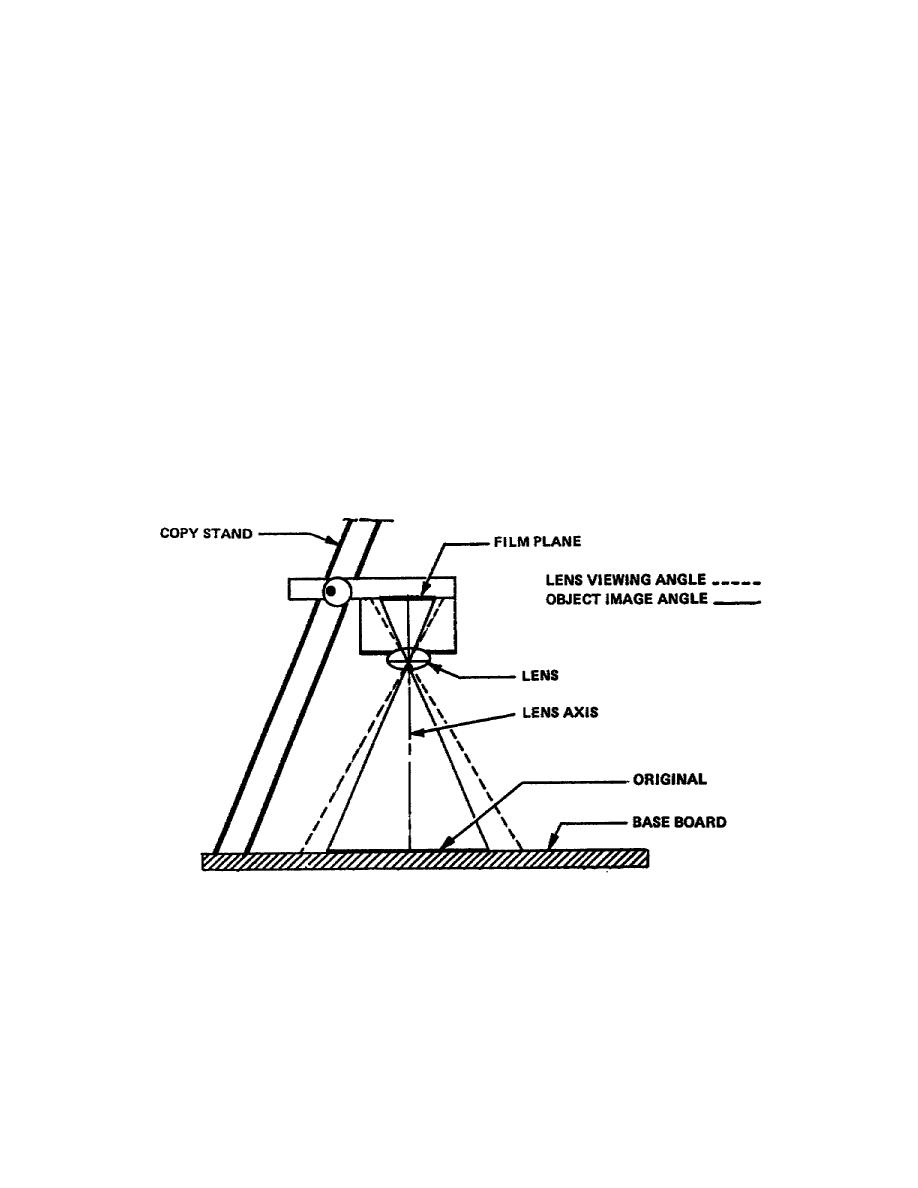
distortion caused by the lens. The reason you place the original upside down on the copy board is so it
will appear right side up on the ground glass of the camera; this makes focusing the camera easier for
you. Holding the original flat is most important; any bumps, wrinkles, or other displacement will distort
the image, create shadows and produce hot spots, just as the curved mirrors do in a fun house at an
amusement park.
3.
Choosing copy position. Your choice of copying in the vertical or horizontal position depends
on your camera, size or weight of copy, or your preference. Most small copy cameras mounted on stands
are vertical; that is, they expose copy from above. Most heavy 8- by 10-inch and larger cameras are
horizontal but some such as the KS-7A are adjustable to both styles. Any hand-held camera and the 4-
by 5-inch view camera can be used in either way (figs 3-1 and 3-2).
Learning Event 2:
PLACING THE LIGHTS
1.
Light is needed. When making a photographic exposure on a piece of film there must be some
type of light, whether it is daylight, studio lights or moonlight. This holds especially true in copy
photography. Most copy photography is done indoors. There are a few things you have to know about
lighting techniques to ensure top-quality copy work.
Figure 3-1. Vertical copying
30



 Previous Page
Previous Page
